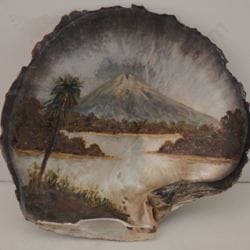The most recent project, in collaboration with GNS Science and the University of Canterbury, is looking at the effects of humans and climate on freshwater lake health over the past 1000 years.“Understanding the factors affecting lake health in the past is crucial for rehabilitating and maintaining our fresh waterways now,” says Dr Lynda Petherick, lead researcher from Victoria University of Wellington on both projects. “New Zealand is world-renowned for its clean lakes and rivers, and fresh water plays a significant role in our culture, economy, recreation, biodiversity, and ecosystem.”Dr Petherick and her team are measuring past changes in freshwater quality by tracking levels of toxic cyanobacteria in different levels of lake sediment. The levels of cyanobacteria in each layer of sediment will give a strong indication of the quality of the water during that time period.“We want to identify past changes in lake health and work out what is driving them, whether its land-use change, natural variation in climate, changes in nutrients, or other causes,” Dr Petherick says. “Ultimately, we hope our method can be applied to any aquatic environment around the world.”As well as lake sediment, Dr Petherick is using dust to measure past changes in Earth’s climate.“The role of dust in climate change is significant but poorly understood,” she says. “The work we have done has shown that levels of dust in the atmosphere are strongly related to changes in climate, as well as environmental changes (like clearing land for agriculture) caused by humans.”The drier the atmosphere, the more dust will be produced, Dr Petherick says, and many modern dust source areas are expected to get even drier under future climate change scenarios. This increased level of dust could affect several important aspects of life on Earth.“Dust plays an important role in the Earth system,” Dr Petherick says. “It contributes to air quality and pollution, for example, but it can also contribute to the spread of disease—airborne dust particles can carry diseases from one continent to another. It can also affect soil quality and water quality.”Dr Petherick and her team plan to continue studying past changes in atmospheric dust concentrations, which should shed further light on how changes in Earth’s future climate and the resulting changes in dust could affect life on our planet.Dr Petherick will also be leading the new graduate programmes in Environmental Science at Victoria University of Wellington, which are open for enrolments from October 1 2018.



